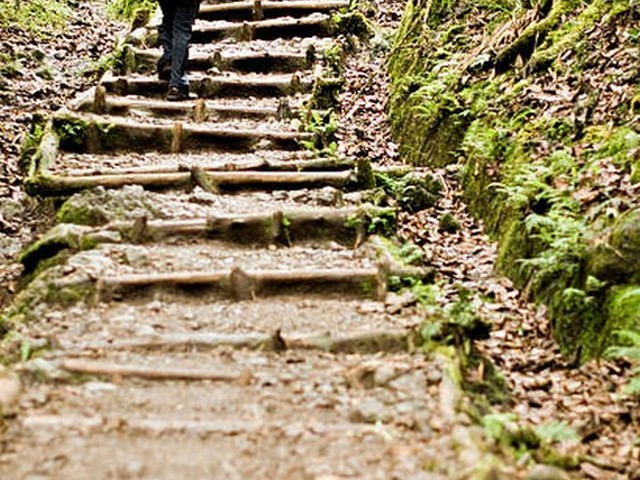How To Train For Kilimanjaro Trekking: Your Path To The Roof Of Africa
Dreaming Of Reaching The Summit?
Picture this: you’re standing on the highest point in Africa, gazing over the clouds, with the sun rising behind the curvature of the earth. This isn’t just any mountain — this is Mount Kilimanjaro, a towering giant that beckons adventurers from around the globe. At Kilimanjaro Centre for Trekking and Ecotourism (KCTE), we believe everyone has the inner strength to make this journey, but like any grand adventure, it requires preparation. Wondering how to train for Kilimanjaro trekking? This guide is your first step towards planting your flag at Uhuru Peak.
Understanding The Challenge Ahead
Climbing Kilimanjaro is more than a physical challenge; it’s a dance of altitude, weather, and endurance. At 5,895 meters (19,341 feet), Kilimanjaro is no small feat. Hence, preparing your body and mind is crucial.
Physical Fitness: A Must-Have
Training for Kilimanjaro doesn’t require you to be a seasoned athlete, but a good level of fitness is essential. The better your condition, the more you’ll enjoy the trek. Focus on cardiovascular fitness, strength training, and hiking. Here’s how:
Cardiovascular Endurance
Engage in activities like running, cycling, or swimming. Aim for at least 30 minutes of cardio, 3-4 times a week. As your fitness improves, increase the intensity and duration.
Strength Training
Strength in your legs, core, and back will support you during long trekking days. Incorporate exercises like squats, lunges, planks, and back exercises into your routine twice a week.
Practice Hikes
Simulate Kilimanjaro’s challenges by hiking local trails. Start with shorter treks and gradually increase the distance and elevation gain. Wear the boots you’ll use on Kilimanjaro to break them in.
Altitude Acclimatization: The Silent Challenge
Altitude can be a game-changer, and acclimatizing is something you can’t fully train for at sea level. However, you can increase your body’s preparedness with these tips:
Pre-Climb High Altitude Exposure
If possible, visit high-altitude locations before your Kilimanjaro trip. Spend a few days hiking or camping at elevation to kick-start your body’s acclimatization process.
Breathing Exercises
Practicing yoga or meditation can improve your lung capacity and control your breathing, which is beneficial at higher altitudes.
Mental Preparation: The Underrated Warrior
Mental stamina will define your journey as much as physical strength. Prepare mentally to handle long days, variable weather, and the emotional highs and lows of the trek.
Visualization
Regularly visualize yourself successfully summiting. Positive visualization prepares the mind for success and overcomes anxiety.
Stress Management
Learn and practice stress management techniques such as deep breathing or progressive muscle relaxation to stay calm and focused during your trek.
Gear Up: Choosing The Right Equipment
The right gear can make or break your Kilimanjaro experience. Invest in quality clothing and equipment. Essentials include:
- Breathable, waterproof layering
- Good quality hiking boots
- Warm sleeping bag
- Headlamp
- Trekking poles
Nutrition And Hydration: Fuel Your Climb
Maintain a balanced diet rich in carbohydrates, proteins, and healthy fats. During the trek, your body will need more calories. Hydration is equally crucial — drink plenty of water before and during your climb.
Join The Community: Kilimanjaro Centre For Trekking and Ecotourism (KCTE)
At KCTE, we don’t just guide; we provide experiences that last a lifetime. Join our community, and let us be part of your journey to the top. Our expert guides, comprehensive support, and attention to ecological practices ensure that your climb is not only successful but also sustainable.
Frequently Asked Questions
How long does it take to train for Kilimanjaro?
Ideally, start training 6 months before your climb. This period allows your body to adjust gradually and increases your success rate.
What is the best time of year to climb Kilimanjaro?
The best times are during the dry seasons: January to March and June to October. Each season offers different advantages in terms of scenery and clarity.
Can beginners climb Kilimanjaro?
Yes, beginners can successfully summit Kilimanjaro. However, adequate training, proper gear, and choosing the right route are crucial.
How do I prevent altitude sickness?
While there’s no foolproof way to prevent altitude sickness, you can minimize the risk by proper acclimatization, staying hydrated, and ascending slowly. Listen to your body and communicate openly with your guide.
Ready To Conquer Kilimanjaro?
Training for Kilimanjaro is a journey of its own, filled with anticipation and preparation. At Kilimanjaro Centre For Trekking and Ecotourism (KCTE), we’re excited to help you make this dream a reality. Book your Kilimanjaro climbing adventure with us, and start your journey to the Roof of Africa today. Reach new heights with KCTE — where every step counts towards the summit!




